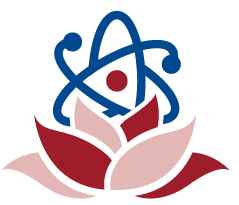| Enteric nervous system རྒྱུ་མའི་དབང་རྩ་མ་ལག | biol. | |
| enteric རྒྱུ་མའི། | biol. Of, relating to, or being within the intestine. | རྒྱུ་མའི་ནང་དུ་ཡོད་པའམ། རྒྱུ་མ་དང་འབྲེལ་བའམ། རྒྱུ་མ་ཡི། |
| entanglement འཛིངས་འཁྲིལ། | | |
| Entamoeba ནང་གནས་ཨ་མི་བྷ་ཕྲ་སྲིན། | biol. | [རྒྱུ་མཆིན་སོགས་ཀྱི་ནང་དུ་གནས་པའི་ཨ་མི་བྷ་ཕྲ་སྲིན།] |
| enquiry དྲི་རྩད། | sci. method An act of asking for information. | གནས་ཚུལ་རྩད་གཅོད་བྱེད་པའི་བྱ་བ། |
| enolase ཨེ་ནོ་སྨིན་རྫས། | biol. An enzyme that is involved in the metabolism of carbohydrates. | ཁར་སྦོ་མངར་རྫས་ཀྱི་ནུས་འགྱུར་ལ་ཐེ་གཏོགས་བྱེད་པའི་སྨིན་རྫས་ཤིག |
| Eniwetok atoll བྱུར་གླིང་ཨེ་ནི་ཝི་ཊག | biol. An atoll in the Ralik Chain of the Marshall Islands in the west-central Pacific Ocean. It was the site of US atomic tests from 1948 to 1958. | ཞི་བདེ་རྒྱ་མཚོ་ཆེན་པོའི་ནུབ་དབུས་སུ་ཡོད་པའི་མར་ཤལ་གླིང་ཕྲན་གྱི་ར་ལིག་ཕྲེང་བའི་ནང་གི་བྱུར་གླིང་ཞིག་ལ་གོ་ཞིང་། སྤྱི་ལོ་ ༡༨༤༨ ནས་ ༡༩༥༨ ལོའི་དབར་དུ་ཨ་རིས་རྡུལ་ཕྲན་མཚོན་ཆ་བརྟག་དཔྱད་བྱེད་སའི་གནས་ཡིན། |
| Enhancer སྤེལ་བྱེད། | biol. | |
| engineering བཟོ་རིག | phys. Technology directed to the design, construction, and maintenance of works, machinery, roads, railways, bridges, engines, all manner of vehicles from micro-carts to space stations, and to the generation, transmission, and use of electric power. Some main divisions are aerospace, chemical, civil, communication, electrical, electronic, materials, mechanical, mining, and structural. | ཐོན་ཟོག་དང་། འཕྲུལ་ཆས། ལམ་ཁ། ལྕགས་ལམ། ཟམ་པ། འཕྲུལ་འཁོར། ཕྲ་བའི་འདྲེན་འཁོར་ནས་མཁའ་དབྱིངས་འབབ་ཚུགས་དབར་གྱི་འགྲུལ་འཁོར། གློག་ནུས་འདོན་པ་དང་རྒྱུད་གཏོང་བྱེད་པ། བེད་སྤྱོད་བྱེད་པ་བཅས་ཇུས་འགོད་དང་འཛུགས་སྐྲུན། རྒྱུན་གནས་བཅས་བྱེད་པར་ཕྱོགས་པའི་འཕྲུལ་རིག ནང་གསེས་གཙོ་བོ་ཁག་ཅིག་ནི་མཁའ་འགྲུལ་དང་། རྫས། སྤྱི་དམངས། བརྡ་འཕྲིན། གློག གློག་ཆས། དངོས་རྫས། ཤུགས་རིག གཏེར་ཁ་སྔོག་འདོན། དབྱིབས་བཀོད་བཅས་ཡིན་ནོ། |
| engineer བཟོ་རིག་འཆར་འགོད་པ། | phys. A person who designs, builds, or maintains engines, machines, or public works. | འཕྲུལ་འཁོར་རམ། འཕྲུལ་ཆས་སམ། དམངས་སྤྱོད་འཛུགས་སྐྲུན་ཇུས་འགོད་དམ། འཛུགས་སྐྲུན། ཡང་ན་རྒྱུན་གནས་བྱེད་དུ་འཇུག་མཁན་གྱི་མི་སྣ། |
| engine འཕྲུལ་འཁོར། | phys. Any device for converting some forms of energy into mechanical work. | ནུས་པའི་ངོ་བོ་འགའ་ཤས་འཕྲུལ་ཆས་ཀྱི་ནུས་པར་བསྒྱུར་བྱེད་ཀྱི་ཡོ་ཆས་གང་རུང་རུང་ཞིག། |
| Engaged learning མཉམ་ཞུགས་ཤེས་སྦྱོང་། | SEE Learning | |
| enervation ཟུངས་ཤོར། | biol. A feeling of being drained of energy or vitality; fatigue. | ནུས་པའམ་ཟུངས་ཤུགས་ཤོར་བའི་ཚོར་བ་ཞིག་སྟེ། ངལ་དུབ། |
| Energy-storer ནུས་པ་གསོག་བྱེད། | biol. | |
| energy state ནུས་བབ། | phys. A definite stable energy that a physical system can have; used especially of the state of electrons in atoms or molecules | ཕྱིའི་དངོས་པོའི་མ་ལག་ཅིག་ལ་ཡོད་ཆོག་པའི་བརྟན་ཞིང་ཚད་ངེས་ཅན་གྱི་ནུས་པ་སྟེ། སྤྱིར་བཏང་རྡུལ་ཕྲན་ནམ་འདུས་རྡུལ་གྱི་ནང་དུ་ཡོད་པའི་གློག་རྡུལ་གྱི་གནས་བབ་ལ་བེད་སྤྱོད་བྱེད། |
